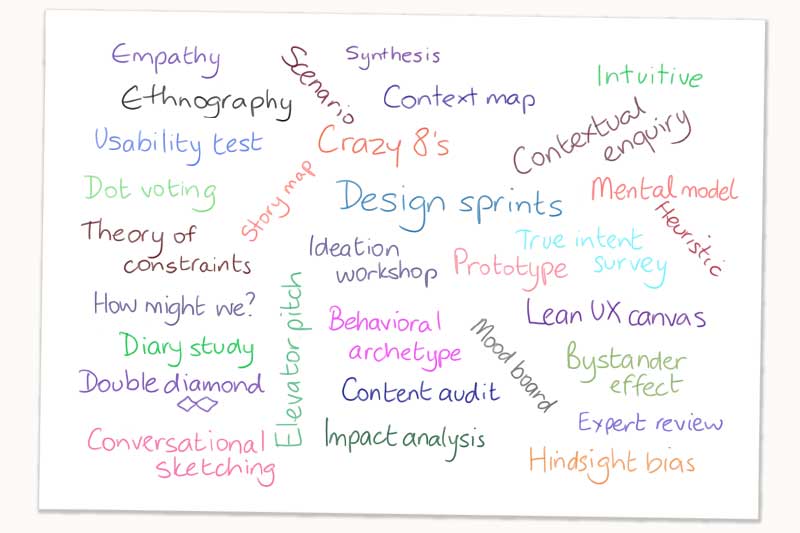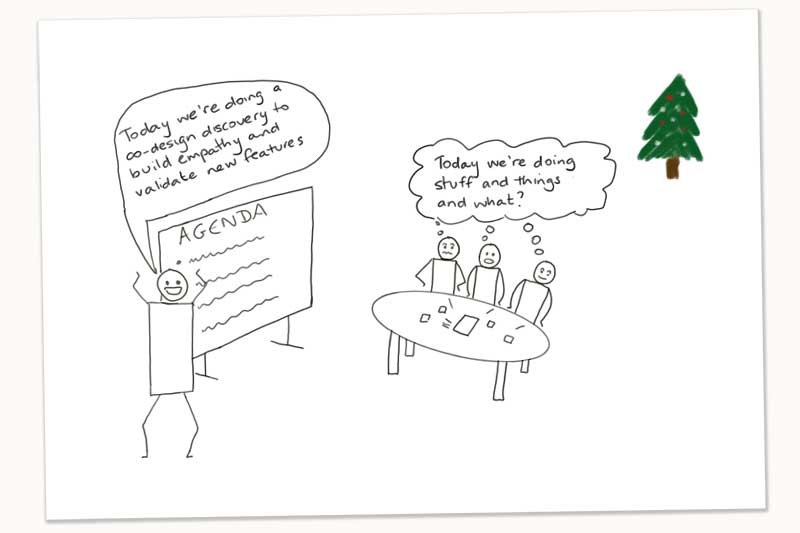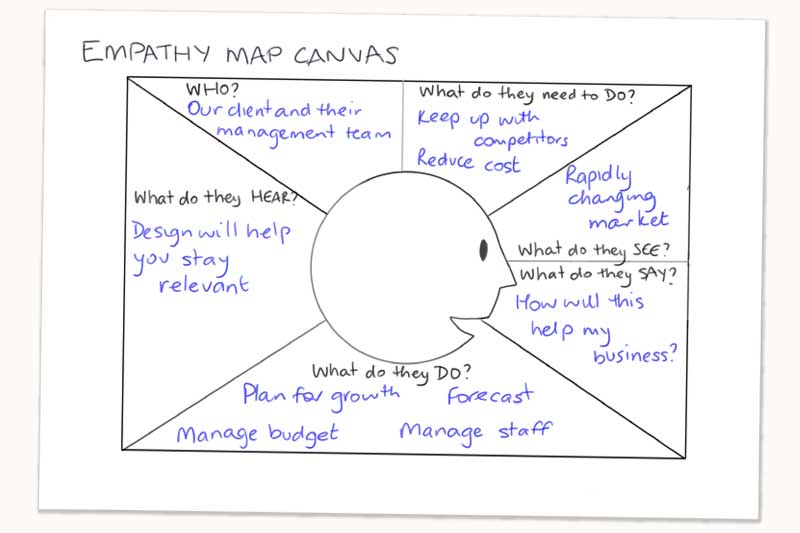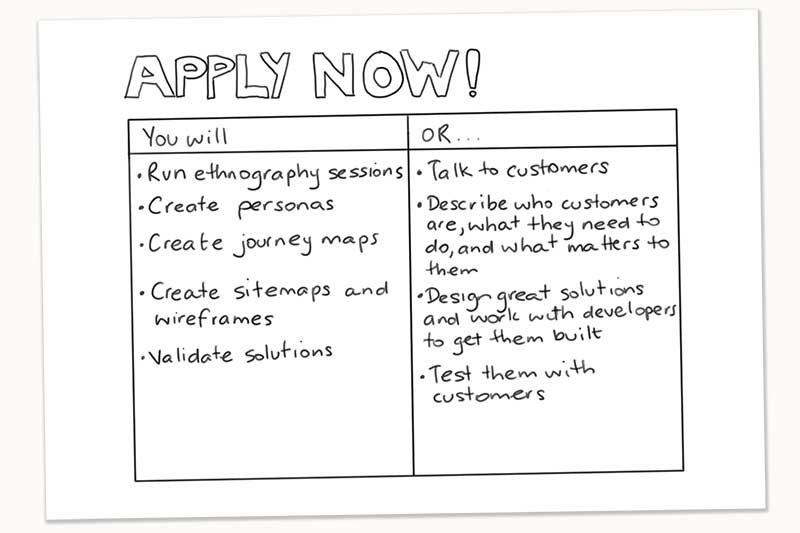Words are amazing things. They pack big thoughts into small spaces and let us get ideas out of our head and into someone else’s head.
Jargon is an even more amazing thing; it lets us communicate complex ideas with our peers. Instead of having to say that we’ll get people to record everything they do for a task over a period, we can say we’re going to run a ‘diary study’. Instead of saying we’ll get people to sketch small ideas quickly, we say we’ll do ‘crazy 8s’. Instead of saying we’ll buy one anonymous small christmas gift for someone in our team or family, we say we’ll do a ‘secret santa’.

Unfortunately, jargon only works when the group we’re communicating with has the right background knowledge to understand it, and if they have similar experiences to our own.
Even more unfortunately, the people we spend most of our time communicating with are not our peers—they’re usually our business colleagues, developers and clients. They are left feeling stupid when we rattle off our jargon-filled methods, techniques and design principles.

As designers, one of our special skills is empathy. Let’s use that empathy in our communications as well.

Next time you’re about to rattle off a stream of jargon, pause yourself. Think about what’s really going on, and what you really mean. What does that technique achieve? How can that design principle be explained more clearly? What outcome does your client hope to achieve?
It’s harder to do than defaulting to your customary patter, but it’s more effective and the people you’re with are left feeling smart, not stupid.

